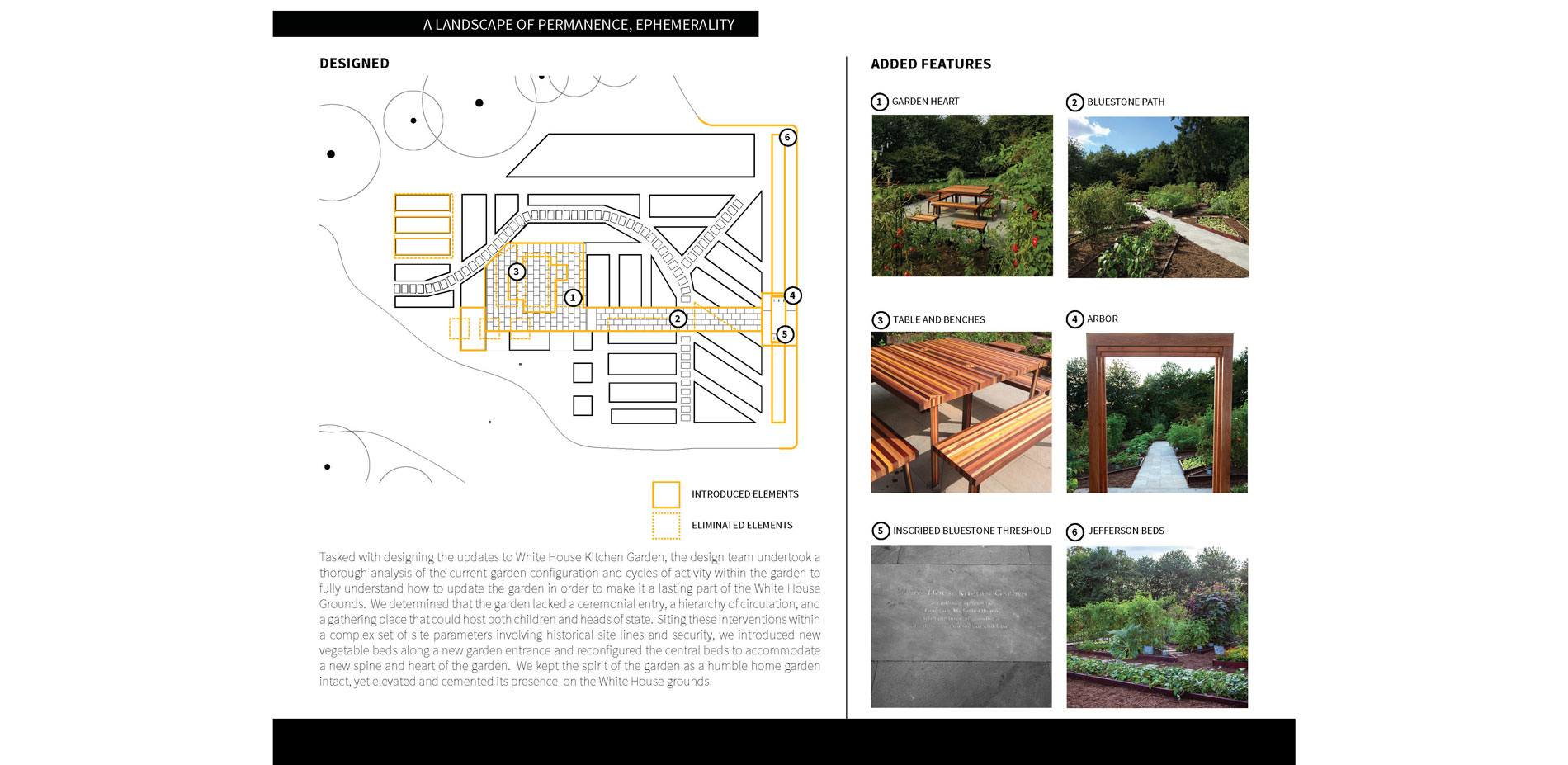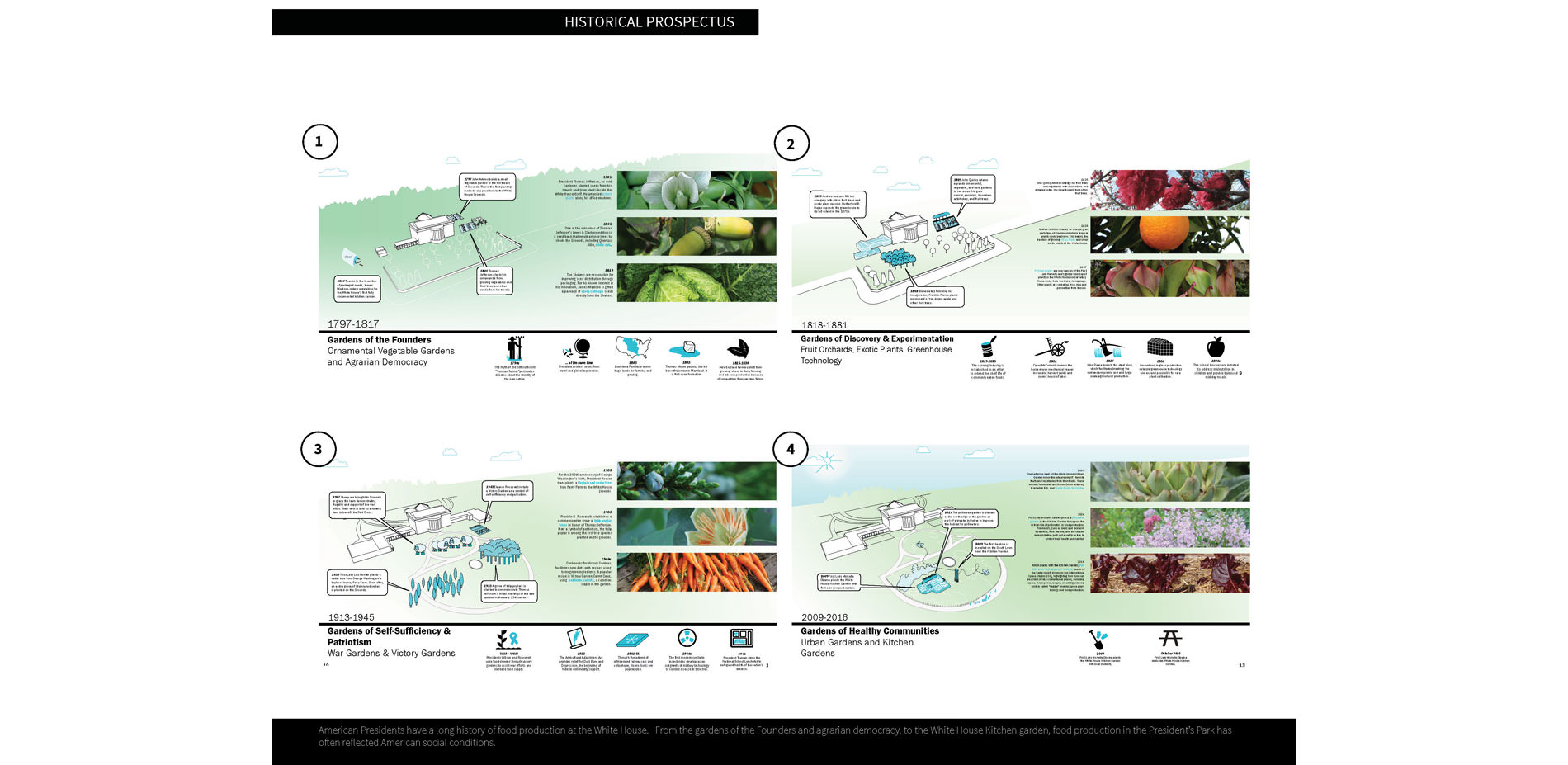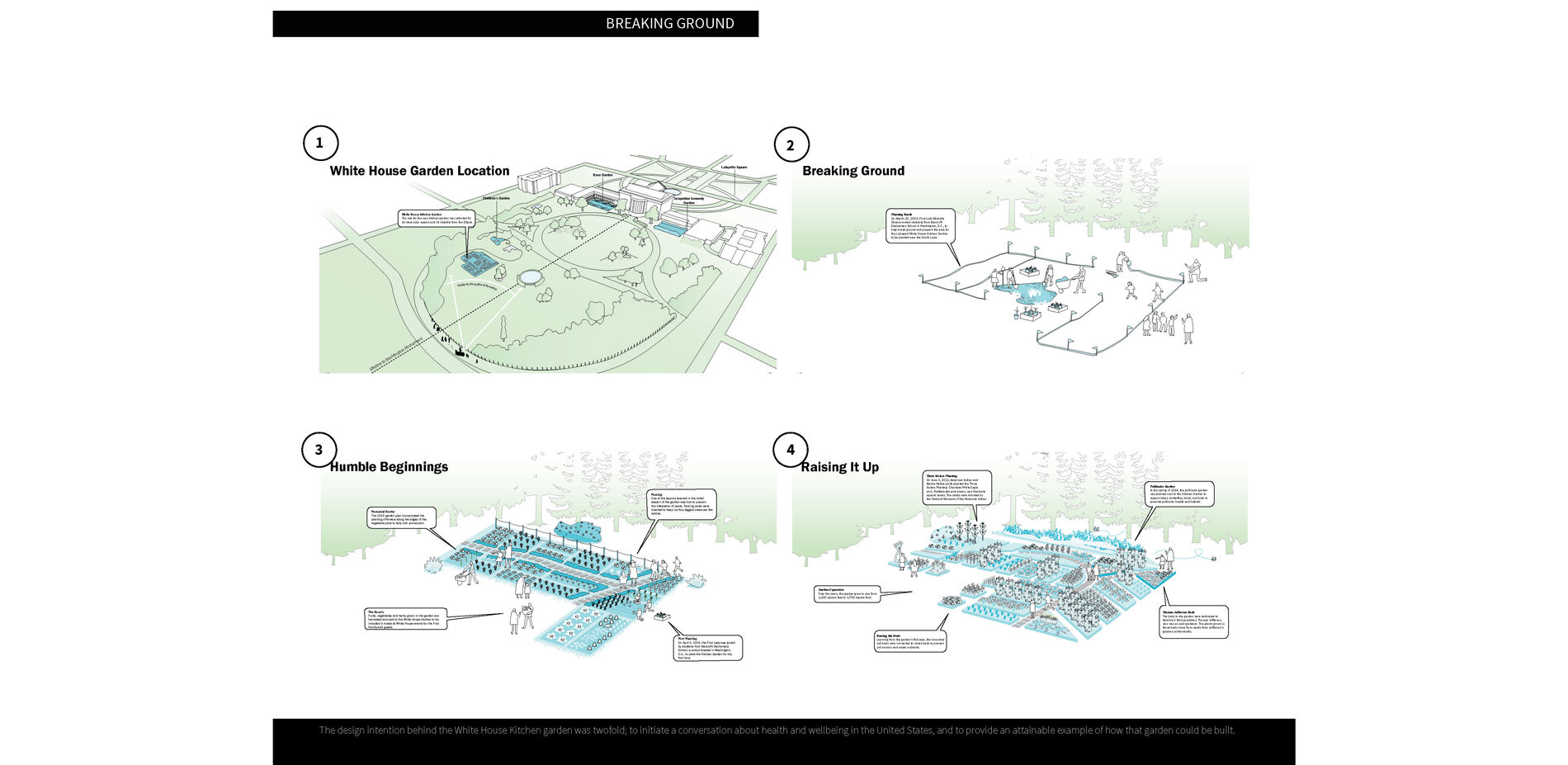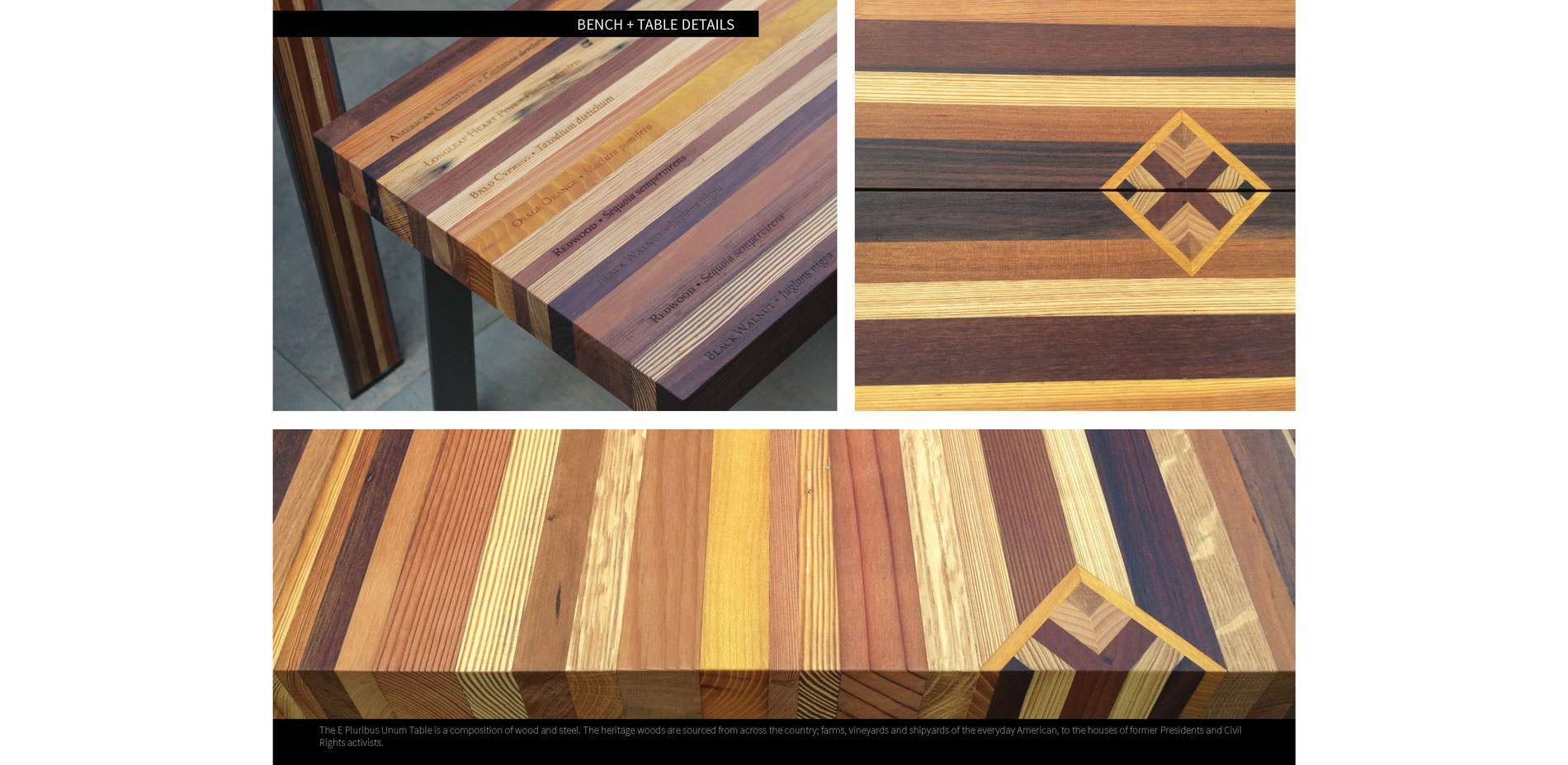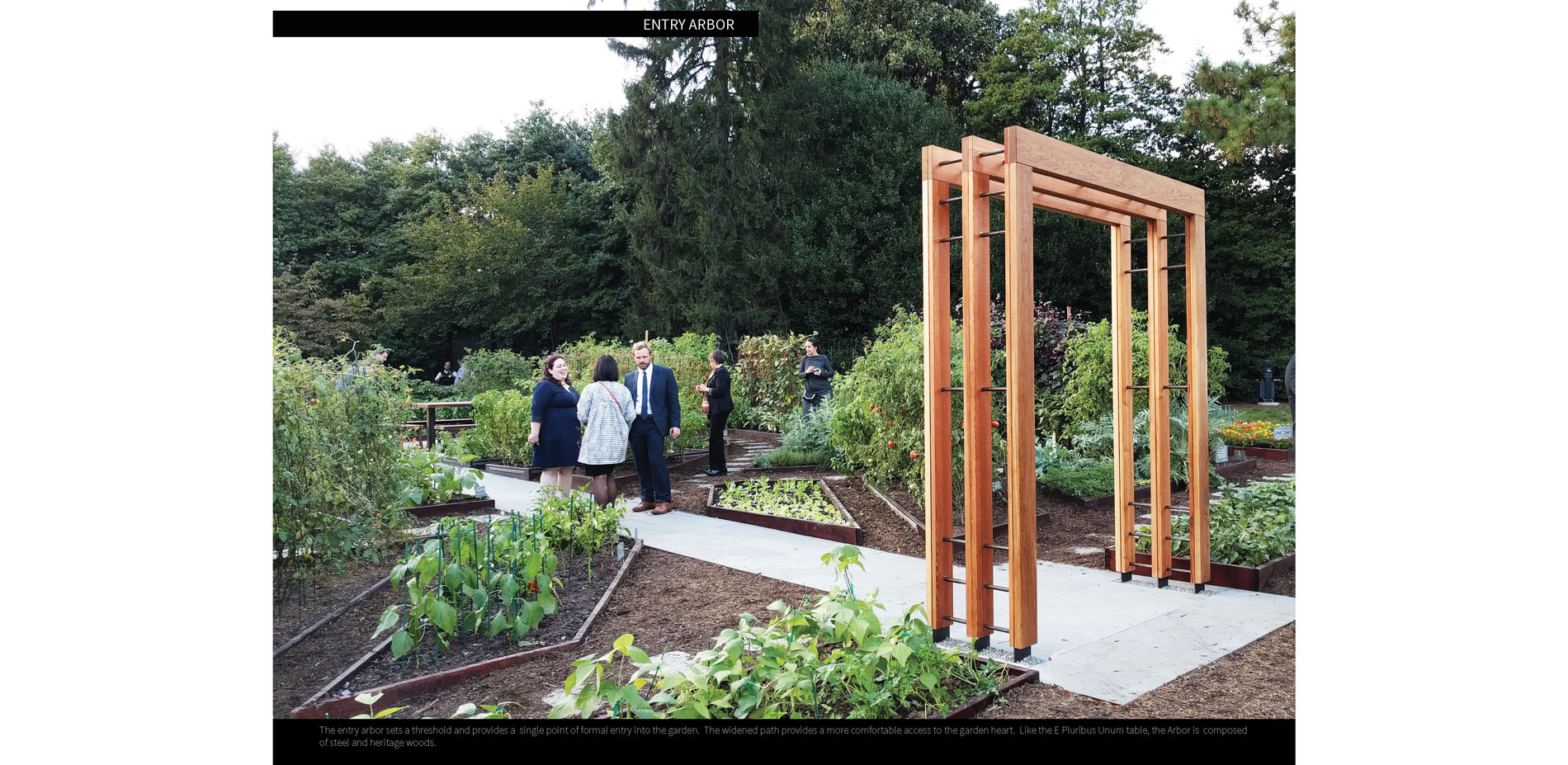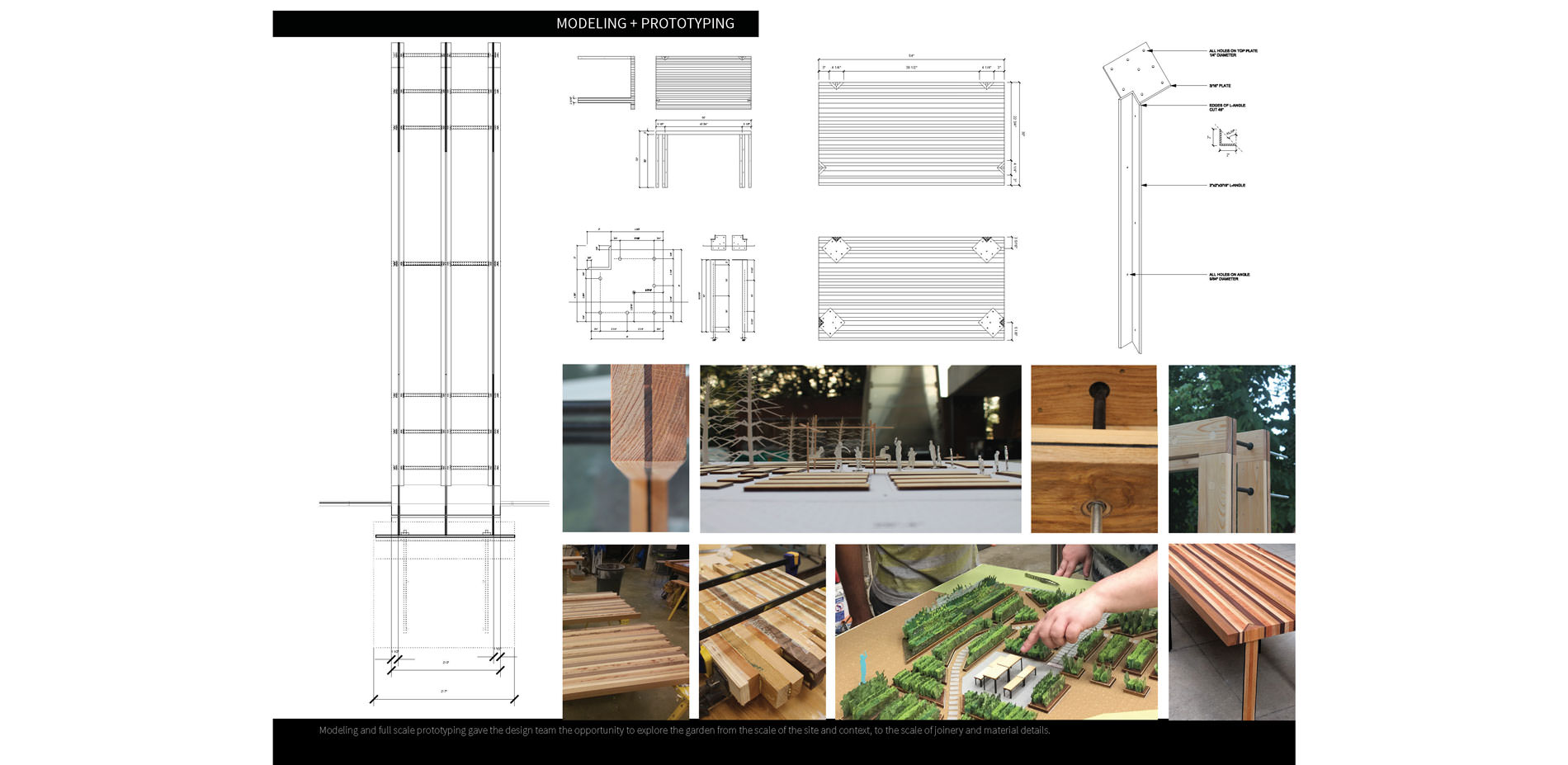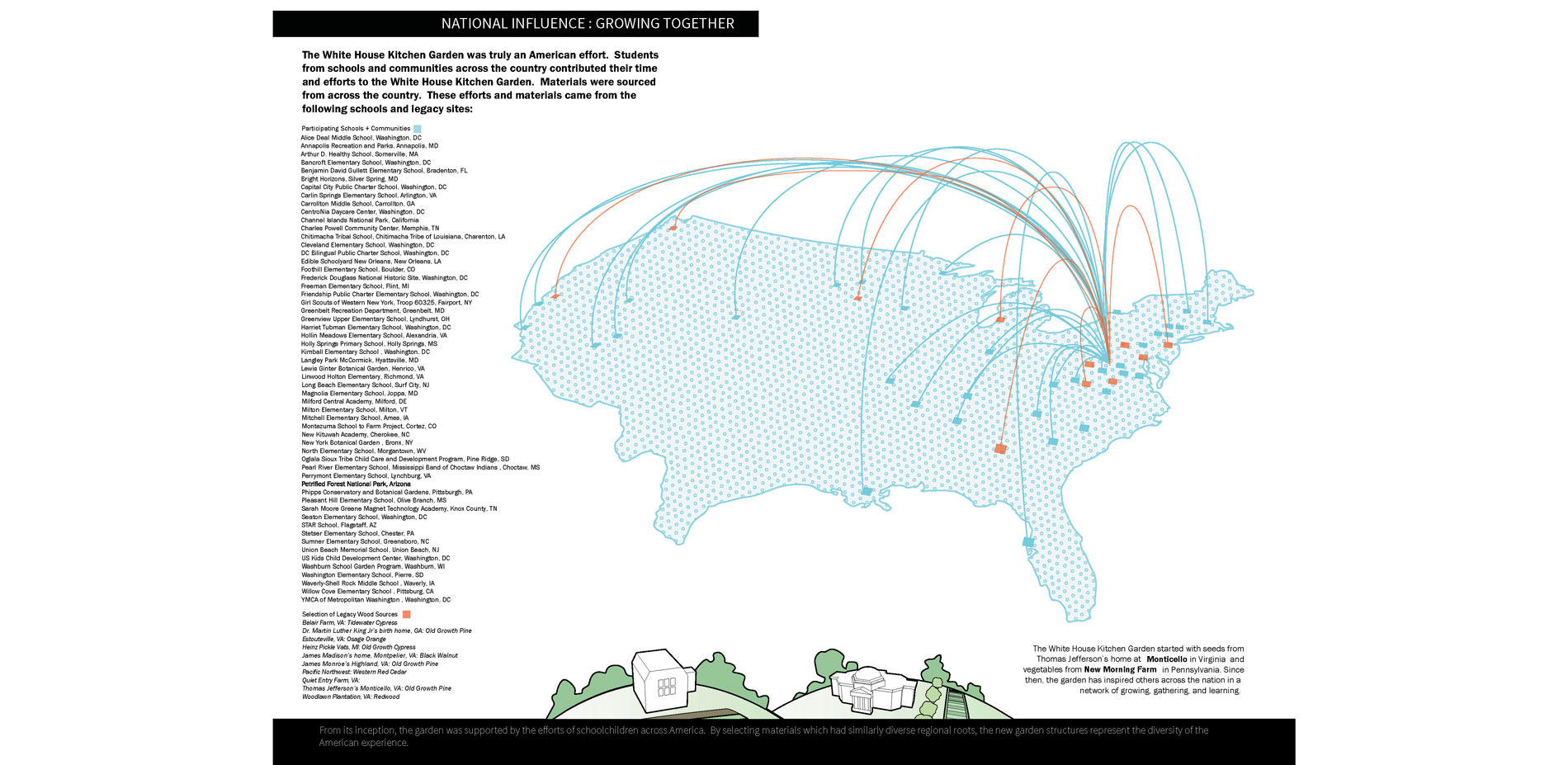The White House Kitchen Garden
HONOR
Student Collaboration
Washington, DC, USA | Team: Scott Shinton, Associate ASLA; Mary McCall, Associate ASLA; Anna Cai, Architecture; Stephen Grotz, Architecture; Owen Weinstein, Architecture; Josh Aronson, Architecture | Faculty Advisors: Elizabeth Meyer, FASLA; Julie Bargmann, ASLA; Roger Sherry, ASLA; Nancy Takahashi, ASLA; Melissa Goldman; Tanya Denckla Cobb
University of Virginia
The level of craft was really remarkable. They understood where they were playing so that this level of craft would represent us and our field very well.
- 2017 Awards Jury
PROJECT STATEMENT
President’s Park, the grounds of the White House in Washington, D.C., is one of the most publicly recognizable landscapes in the country. The White House Kitchen Garden is intentionally sited within that landscape to be visible from the south fence line. It is within this context that we designed updates to the White House Kitchen Garden to establish a lasting symbol of health and wellbeing for children and adults across the country.
The motto of our project, ‘E Pluribus Unum,’ or ‘Out of Many, One,’ guided the design process. Materials, plants, and the efforts of many people from across the country are assembled within the garden as a diverse composition: a celebration of American uniqueness and commonality. We sourced materials from across the country, representing the diversity of climatic zones, ecological communities, and agricultural traditions that constitute the nation. We combined those materials to highlight their textures, colors and origins. The material richness and aesthetic simplicity of the designs highlight the updated White House Kitchen Garden.
PROJECT NARRATIVE
Introduction
In the spring of 2016, our design team of architecture and landscape architecture students and faculty advisors were invited to design the enhancements to the White House Kitchen Garden, established by Michelle Obama in 2009. Two primary factors drove the initial design of the White House Kitchen garden: to begin a dialogue about children’s health and wellbeing in the United States, and to provide a replicable example of how that garden might be built. The White House Kitchen Garden has hosted numerous events for school children from across the country, who planted and harvested the fruits and vegetables throughout the seasons. The garden is highly visible from the south fence line of the White House, where visitors to Washington, DC frequently gather to take selfies and post them on social media.
The Kitchen Garden
The garden, or more specifically, the kitchen garden, is both a practical tool used for self-sufficiency, and also an emblem of social values, public health, and economic change. One garden can be a symbol of a larger movement; a collection of gardens can add up to a regional--or national--proof of a valuation of landscape and cultivation.
Leberecht Migge, a German landscape architect active in the early 20th century, promoted the module of the kitchen garden as a method of combatting social and economic problems in Germany; he synthesized the garden, the home, and communal space with his cohesive designs for successful social housing projects. In the spirit of promoting self-subsistence, the United States, the United Kingdom, and Canada also encouraged gardening to provide essential goods during World War II by urging people to start their own Victory Gardens. Coinciding with these movements, American presidential families have long had a history of food production at the White House: from John Adams’ 1797 White House vegetable garden, to Eleanor Roosevelt’s victory garden installation in 1943, food production in the President’s Park has often reflected American social and political conditions.
Process
Starting in June, the design team undertook a thorough analysis of the current garden configuration and cycles of activity within the garden to fully understand how to enhance the garden with a goal of making it more formalized and ‘set in stone’ projecting a sense of permanence. Already a highly successful and productive garden, we determined that the designs had to be meaningful, subdued, and precise. Each design move was rooted in the themes of gathering, harvesting, and celebrating the unifying ‘E Pluribus Unum.’
After our site visits and conversations with the client that cares for the White House grounds, we gathered that the garden lacked a ceremonial entry, a hierarchy of circulation, and a gathering place that could host the children who volunteer in the garden as well as dignitaries who visit it. The task of formalizing the Kitchen Garden required upholding the original design intent, while also giving it structure. Siting the enhancements within a complex set of site parameters involving historical site lines, access, and security, the updated garden features new vegetable beds along a new garden entrance, a new entry sequence, an inscribed threshold, a garden heart with a community heritage wood table and benches, and reconfigured central beds to accommodate this new spine and heart of the garden. We kept the spirit of the garden as a humble home garden intact, yet elevated and strengthened its presence on the White House grounds.
Garden Elements
Because food gardens are seasonal, the plant architecture of the White House Kitchen Garden changes throughout the year. The design considers the garden parameters in the spring, summer, fall, and winter.
The “heart”, or central gathering space of the garden is a space for groups to come together, as well as a private respite away from the main house. We sited the “heart” to maximize views of the garden interior but also to provide privacy, while minimally disturbing the original footprint. The new path provides a widened path that provides an accessible and more comfortable pathway to the garden heart. Bluestone pavers lead from the entry threshold to the heart of the garden. The entry arbor sets a threshold and provides a single point of formal entry into the garden; it also employs the process of “flitching” - sandwiching a thin plate of steel between two wood pieces. The wood softens the palette and adds texture, while the steel supplies the structural strength. Like the 'E Pluribus Unum' table, the Arbor is composed of steel and heritage woods. Materiality
While the spatial designs were most important to the continued success of the garden, the materiality of these enhancements became a crucial part of its legacy. Just as many of the plants in the garden grew from heritage seeds from around the country--from Thomas Jefferson’s Monticello estate, to various historic farms--we felt that it was important to utilize use salvaged materials from important American places. Materials are intentionally sourced from near and far, representing the diversity of climatic zones, ecological communities, and agricultural and craft traditions that constitute the nation, a celebration of uniqueness and commonality.
The garden architecture of this palette features a distinguished mix of wood species from across the nation, brought together to highlight their distinct colors, textures and origins, while referencing our nation’s industrial heritage and innovative spirit. Each material tells a different story about the history of social influence and labor in early America, from Virginia to California and New York to Georgia, tying together many narratives into a cohesive design. Agriculture was once integrated into urban communities and academic institutions. For instance, Thomas Jefferson’s Academical Village was not only a construction of marble steps, brick and slate but also included adjacent farmland that revealed a very different narrative about those who inhabited early Charlottesville. Washington D.C. also once an agricultural center is now a landscape of monuments built of marble and precious stones. This material palette exploration includes the use slate shingles from Pavilions that are as old as the University, and also reclaimed oak beams harvested from a local barn. An old growth pine from Dr. Martin Luther King Jr’s home in Georgia is used in the table, as well as Black Walnut from James Madison’s home, and pine from James Monroe’s home in Highland, Virginia.
Looking Forward
Since the completion of the project, foreign dignitaries and children alike have visited the garden for harvest events and official state visits. The White House Kitchen Garden continues to serve its mission in being a model for promoting health and wellness for generations to come and as a lasting feature of the White House Grounds.
Team Description
Our team was comprised of six students. Two of those students were Masters of Landscape Architecture students, two students were Masters of Architecture students, and two were undergraduate Architecture students. Throughout the project, collaboration between team members was a driving force of the creative process. Group meetings were held a few times a week, and students worked in close physical proximity to one another. For the majority of the project, the group worked as a team, sharing modeling, drawing, designing and prototyping responsibilities. Each student brought their own schooling, outside skills and experiences to the project. Experience in construction was a skill shared by almost everyone in the group. All students shared an interest in materiality and assembly. Site layout was the result of collaboration. Towards the end of the project, tasks were divided more. One undergraduate Architecture student was primarily responsible for creating a booklet to document our work, assisted later by a Masters of Architecture student. For the final prototype of the table and arbor, the two Masters of Architecture students and one Masters of Landscape Architecture student did the majority of the construction work, and helped build the pieces that are installed. The second Master of Landscape Architecture student was responsible for the rendered site plan and graphics.
PRODUCTS
All materials are legacy woods:
- Home of Martin Luther King
- Home of Thomas Jefferson
- Home of James Monroe
- Home of James Madison


